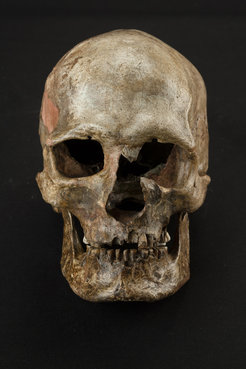Europe’s Population Dramatically Changed at the End of the Last Ice Age
Genetic analyses shed new light on early European population dynamics

Human skull dated to around 30,000 years ago of the burial 16 in Dolní Vĕstonice archaeological site, Czech Republic.
Making use of ancient radiocarbon-dated mtDNA as molecular calibration points, the authors were able to revise the mtDNA mutation rate, the pace at which DNA accumulates mutations over time, and precisely dated the origin of the two non-African mtDNA types, N and M, to around 50,000 years ago. “This date estimate supports a late and rapid dispersal of all non-African populations carrying both M and N haplogroups, not only across Asia but also into Europe,” explains Johannes Krause, director at the MPI for the Science of Human History.
The new data provided still more exciting results. While large-scale population replacement events have already been shown during the Neolithic and Bronze Age, the team found evidence for a previously unknown major population shift in Europe around 14,500 years ago, at the beginning of the Late Glacial. “During this period of drastic warming, it looks like the European hunter-gatherers were largely replaced by a population from a different maternal source,” explains Adam Powell, a senior author of the study at the MPI in Jena. He adds, “Our modeling of ancient European hunter-gatherers demonstrates that their demography was likely far more complicated than previously assumed.”
Future analyses of ancient nuclear DNA of additional geographically and temporally distributed specimens will help to obtain a more comprehensive picture. The researchers hope to better characterize the genetic consequences of the retraction to LGM climatic refugia, as well as identify the source of the later incoming hunter-gatherer population.
